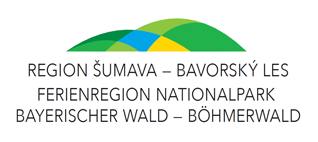8 – The Golden Road by the Bohemian-Bavarian border and in Bavaria
From the gamekeeper’s lodge in Březník, the Golden Road descended in a southeastern direction towards the Březník stream valley. After crossing the stream it reached today’s road, which leads west from the resting place by the end of the Modrava road and towards Studená (Cold) mountain, then to the marshes of the National Park towards Medvědí (Bear) mountain (1224 m). After crossing the road towards Studená mountain, the Golden Road connects to the remains above the gamekeeper’s lodge and begins to climb in a south-eastern direction towards the state border with Bavaria .
The sunken lanes rise very steeply at first, then the terrain evens out in front of the border mountain ridge and the climb becomes less steep all the way towards the border stone from 1772. In the place, where the road crossed the border stood gallows, whose “operations” were administered by the city of Grafenau between the 16th and 18th centuries.
On the course of the Golden Road in Bavaria, King Charles IV founded the towns Grafenau and Hals by Passau (they received town privileges in 1376) and a small Pauline monastery Sankt Oswald (1396). They were all to provide shelter and services to travelling caravans, the monastery also serving as a refuge to pilgrims. The actual founder of the monastery and the owner of the newly founded towns was the landgrave Jan of Leuchtenberk, a personal favourite of Charles IV who also became a holder to the king’s castle Kašperk in 1379.
After the end of the Golden Road and the Golden Trail
In 16th century, an initiative of the town of Grafenau helped revive the Golden Road, when in 1560 they turned directly to the Bavarian duke Albrecht and asked him for help with renewing this lately quite run down and dying road.
The duke agreed, thinking of the profits increased trade and tariff fees could bring him, and ordered his people to help with the rebuilding, as well as orchestrated a similar renewal operation on the Bohemian side. The trade with Bavarian salt on the Golden Road started to grow and became an unwanted competition, which harmed the interests of Bohemian town on the Golden Trail (Prachatice, Vimperk, partly Kašperské Hory) and the Passau bishopric.
But no sooner than 1608 an agreement was signed, stating that the city of Passau would buy “Bavarian” salt from the Bavarian duchy and then transport it together with Passau salt (both came from the same Alpine deposits on the Salzburg-Bavarian border) to Bohemia on the Golden Trail.


